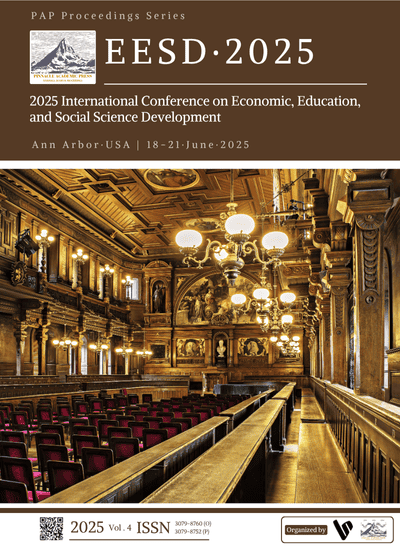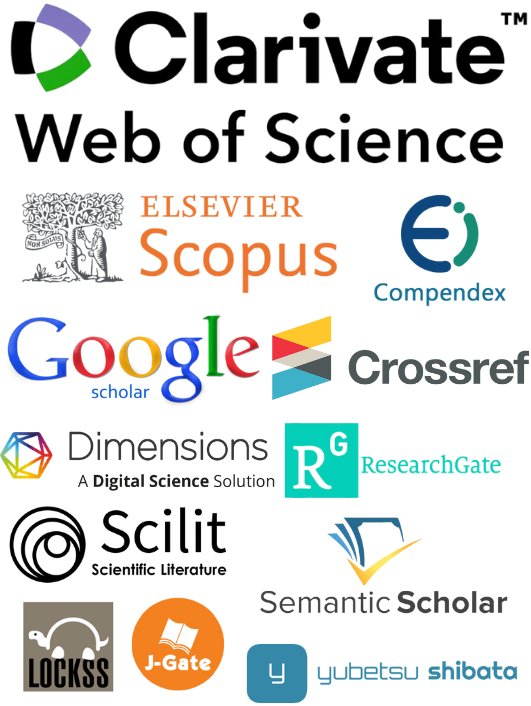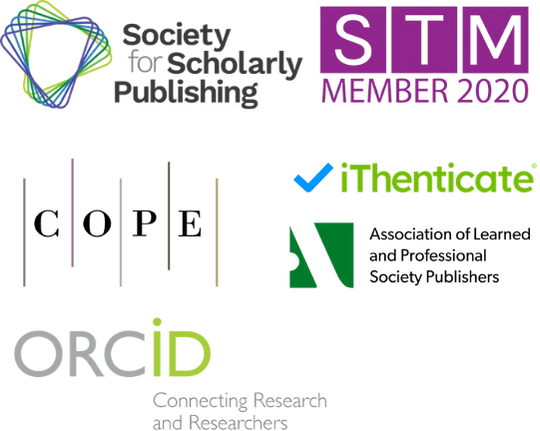Construction of a Digital Economy Development Model and Its Driving Effect on Regional Economic Growth: A Case Study of the Yangtze River Delta
DOI:
https://doi.org/10.71222/vgeez334Keywords:
digital economy, regional economic growth, Yangtze River Delta, knowledge graph, structural equation modeling, policy simulationAbstract
The digital economy is reshaping regional development, yet measuring its complex impact remains difficult due to multidimensional digital factors and regional heterogeneity. This study proposes a modular, knowledge-driven framework to analyze how digital economic development affects regional growth, focusing on the Yangtze River Delta. A structured knowledge base integrating economic, infrastructure, platform-related, and policy data supports semantic reasoning across 40 cities. The system combines fuzzy clustering, SEM, and spillover simulation, incorporating a personalization module to account for differences among urban contexts. Empirical validation over 10 years reveals key digital drivers of regional GRP through productivity and innovation channels. The framework offers interpretable, scalable insights for policy and planning, with future work extending to real-time and national applications.
References
1. L. D. Williams and L. Dube, "Concepts of Digital Economy and Industry 4.0 in Intelligent and information systems," Int. J. Intell. Netw., vol. 2, pp. 122–129, 2021, doi: 10.1016/j.ijin.2021.09.002.
2. M. Shahbaz, et al., "The impact of digital economy on energy transition across the globe: The mediating role of government governance," Renew. Sustain. Energy Rev., vol. 166, p. 112620, 2022, doi: 10.1016/j.rser.2022.112620.
3. Y. E. Rachmad, "CBDC and the Digital Economy: Mitigating Risks and Capitalizing on Opportunities," The United Nations and the Nobel Peace Prize Awards, 2025.
4. L. Wang and J. Shao, "Digital economy, entrepreneurship and energy efficiency," Energy, vol. 269, p. 126801, 2023, doi: 10.1016/j.energy.2023.126801.
5. J. Wang, et al., "How does the digital economy improve high-quality energy development? The case of China," Technol. Forecast. Soc. Change, vol. 184, p. 121960, 2022, doi: 10.1016/j.techfore.2022.121960.
6. L. Brandt, G. Kambourov, and K. Storesletten, "Barriers to entry and regional economic growth in China," Rev. Econ. Stud., 2025, doi: 10.1093/restud/rdaf029.
7. J. P. Namahoro, et al., "Impact of energy intensity, renewable energy, and economic growth on CO2 emissions: Evidence from Africa across regions and income levels," Renew. Sustain. Energy Rev., vol. 147, p. 111233, 2021, doi: 10.1016/j.rser.2021.111233.
8. M. Heikal, R. N. Ilham, and M. Khaddafi, "Accelerate Economic Growth of Lhokseumawe City with Application of Supply Chain and Main Strategic Commodity Model Based on Sharia During the Covid-19 Pandemic," Qual. Access Success, vol. 23, no. 191, 2022, doi: 10.47750/QAS/23.191.16.
9. X. Luo, “Immersive digital modeling and interactive manufacturing systems in the textile industry,” J. Comput. Signal Syst. Res., vol. 2, no. 5, pp. 31–40, 2025, doi: 10.71222/jyctft16.
10. X. Luo, “Reshaping coordination efficiency in the textile supply chain through intelligent scheduling technologies,” Econ. Manag. Innov., vol. 2, no. 4, pp. 1–9, 2025, doi: 10.71222/ww35bp29.
11. F. Shen, et al., "The effect of economic growth target constraints on green technology innovation," J. Environ. Manage., vol. 292, p. 112765, 2021, doi: 10.1016/j.jenvman.2021.112765.
12. R. Mahtta, et al., "Urban land expansion: the role of population and economic growth for 300+ cities," npj Urban Sustain., vol. 2, no. 1, p. 5, 2022, doi: 10.1038/s42949-022-00048-y.
13. X. Chenhong and G. Zhai, "The spatiotemporal evolution pattern of urban resilience in the Yangtze River Delta urban ag-glomeration based on TOPSIS-PSO-ELM," Sustain. Cities Soc., vol. 87, p. 104223, 2022, doi: 10.1016/j.scs.2022.104223.
14. W. Zhang, et al., "Comparing the Yangtze and Mississippi River Deltas in the light of coupled natural-human dynamics: Lessons learned and implications for management," Geomorphology, vol. 399, p. 108075, 2022.
15. J.-B. Liu, Y.-Q. Zheng, and C.-C. Lee, "Statistical analysis of the regional air quality index of Yangtze River Delta based on complex network theory," Appl. Energy, vol. 357, p. 122529, 2024, doi: 10.1016/j.apenergy.2023.122529.
16. J. Wang, X. Dong, and K. Dong, "How does ICT agglomeration affect carbon emissions? The case of Yangtze River Delta urban agglomeration in China," Energy Econ., vol. 111, p. 106107, 2022, doi: 10.1016/j.eneco.2022.106107.
17. W. Li, et al., "Carbon emission and economic development trade-offs for optimizing land-use allocation in the Yangtze River Delta, China," Ecol. Indic., vol. 147, p. 109950, 2023, doi: 10.1016/j.ecolind.2023.109950.
18. L. Zhong, et al., "A comprehensive survey on automatic knowledge graph construction," ACM Comput. Surv., vol. 56, no. 4, pp. 1–62, 2023, doi: 10.1145/3618295.
19. T. Shen, F. Zhang, and J. Cheng, "A comprehensive overview of knowledge graph completion," Knowl.-Based Syst., vol. 255, p. 109597, 2022, doi: 10.1016/j.knosys.2022.109597.
20. X. Hao, et al., "Construction and application of a knowledge graph," Remote Sens., vol. 13, no. 13, p. 2511, 2021, doi: 10.3390/rs13132511.
21. X. Zhu, et al., "Multi-modal knowledge graph construction and application: A survey," IEEE Trans. Knowl. Data Eng., vol. 36, no. 2, pp. 715–735, 2022, doi: 10.1109/TKDE.2022.3224228.
22. X. Zeng, et al., "Toward better drug discovery with knowledge graph," Curr. Opin. Struct. Biol., vol. 72, pp. 114–126, 2022, doi: 10.1016/j.sbi.2021.09.003.
23. J. B. Ullman and P. M. Bentler, "Structural equation modeling," Handb. Psychol., 2nd ed., vol. 2, 2012, doi: 10.1002/9781118133880.hop202023.
24. G. W. Cheung, et al., "Reporting reliability, convergent and discriminant validity with structural equation modeling: A re-view and best-practice recommendations," Asia Pac. J. Manag., vol. 41, no. 2, pp. 745–783, 2024, doi: 10.1007/s10490-023-09871-y.
25. J. F. Hair Jr., et al., Partial Least Squares Structural Equation Modeling (PLS-SEM) Using R: A Workbook. Springer Nature, 2021.
26. E. Roemer, F. Schuberth, and J. Henseler, "HTMT2–an improved criterion for assessing discriminant validity in structural equation modeling," Ind. Manag. Data Syst., vol. 121, no. 12, pp. 2637–2650, 2021, doi: 10.1108/IMDS-02-2021-0082.
27. T. A. Whittaker and R. E. Schumacker, A Beginner's Guide to Structural Equation Modeling. Routledge, 2022, doi: 10.4324/9781003044017.
28. C. Sun, Z. Xu, and H. Zheng, "Green transformation of the building industry and the government policy effects: Policy simulation based on the DSGE model," Energy, vol. 268, p. 126721, 2023, doi: 10.1016/j.energy.2023.126721.
29. Q. Yang, et al., "System simulation and policy optimization of China's coal production capacity deviation in terms of the economy, environment, and energy security," Resour. Policy, vol. 74, p. 102314, 2021, doi: 10.1016/j.resourpol.2021.102314.
30. A. Amin and E. Dogan, "The role of economic policy uncertainty in the energy-environment nexus for China: evidence from the novel dynamic simulations method," J. Environ. Manage., vol. 292, p. 112865, 2021, doi: 10.1016/j.jenvman.2021.112865.
31. S. Razavi, et al., "The future of sensitivity analysis: an essential discipline for systems modeling and policy support," Environ. Model. Softw., vol. 137, p. 104954, 2021, doi: 10.1016/j.envsoft.2020.104954.
32. J. Collins, et al., "A review of physics simulators for robotic applications," IEEE Access, vol. 9, pp. 51416–51431, 2021, doi: 10.1109/ACCESS.2021.3068769.
33. Y. Liu, “Post-pandemic Architectural Design: A Review of Global Adaptations in Public Buildings”, Int. J. Eng. Adv., vol. 2, no. 1, pp. 91–100, Apr. 2025, doi: 10.71222/1cj1j328.
34. G. Wang, "Performance evaluation and optimization of photovoltaic systems in urban environments," Int. J. New Dev. Eng. Soc., vol. 9, pp. 42–49, 2025.
Downloads
Published
Issue
Section
License
Copyright (c) 2025 Boqin Liu (Author)

This work is licensed under a Creative Commons Attribution 4.0 International License.



